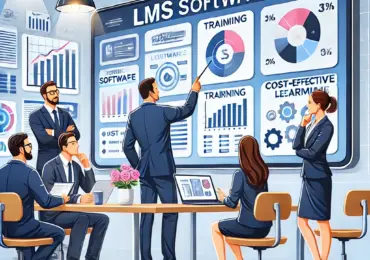Today’s cut-throat corporate world is always looking for avenues to refine employee skills and knowledge efficiently. The best solution that is gaining popularity now is investing in a Learning Management System (LMS). But it is a tough call to get the right LMS, leaving aside the cost part. This article has all the information about how you can ensure you are getting a quality LMS at a low price that ensures effective employee training at all levels.
Understanding Business Needs
However, before organizations explore the various LMS solutions on the market, they need first to determine their specific training needs. However, having clear goals and objectives can help you narrow it down. Knowing these needs guarantees a right-fit solution, be it compliance, skill development, or onboarding. Organizational scale and growth pattern should also be taken into account so that the best LMS for employee training that can adapt to change can be selected.
Research and Compare Options
Thorough research is an important step in making the right decisions. But, you need to figure out different LMS platforms and their features. Below, you will find a side-by-side comparison that outlines the pros and cons of each system youuse. Secondly, user reviews and testimonials are reliable sources of information that review the functionality of the platforms and their user-friendliness.
Evaluating Key Features
Look for an LMS that has the right type of features based on your training goals. Some of them are content creator tools, reporting features, and mobile-ready. For global organizations, integration with existing software and the ability to support multiple languages can be important as well. Employees have a better e-learning experience through an L&D system that features intuitive navigation and a simple UX.
Budget Considerations
Choosing the highest or lowest price isn’t always the right option, as the actual expenses are often incurred later if the quality of the tools chosen is not right. No more pain for organizations to extend the focus on value alongside the price. You need to be mindful of the indirect costs, including implementation, training, and support. Most LMS providers have a tiered pricing plan, giving business space to start small and scale up when required.
Trial Periods and Demos
Utilizing trial periods and demos gives you a taste of hands-on experience with potential LMS options right away. It also helps organizations test whether the system works well with existing processes and how employees will respond to it. Having a few employees test out the tool in the pilot stages will ensure feedback that will help you make a more educated decision.
Vendor Support and Stability
Quality customer support is one of the most critical things to consider when choosing an LMS. Good vendors will request your help on time and update you periodically about the system so that you do not face a problem. A bad experience can be avoided later by evaluating the credentials and responsiveness of LMS providers to queries. Also, a vendor with a solid track record of customer satisfaction is generally a safer position.
Scalability and Flexibility
A learning management system (LMS) should scale with the organization. You need scalability and flexibility to cater to the changing business requirements. Customizable features and the ease of adding users without proportionately increasing costs have kept the system relevant for many users over the years. Having an LMS that is scalable means that there will be little to no need for replacements every couple of years, which saves resources as well.
Security and Compliance
With a spike in cyber attacks, businesses cannot afford to skip on data security. Before choosing an LMS, organizations need to check if the LMS is suitable and complies with standards and regulations depending on the industry. Crucial is the protection of sensitive employee information. Secure login, data encryption, and security updates are some features that are not compromised in terms of business stability and user trust; without them, you will be losing the integrity of your app.
Feedback & Continuous Improvement
Any training should have continuous improvement as its focal point. User feedback — feedback from employees and their managers — can help inform you where to improve. An LMS that allows tracking feedback and easy analysis encourages constant evolution. Frequent evaluations help the system stay effective and directed at the organizational end of goals.
Conclusion
A strategic approach is needed to find the best LMS for employee training without burning a hole in your pocket. With knowledge of business needs, critical features, and lifecycle value, an organization can choose wisely. A system that works for the good of employees and employers by supporting scalability, security, and support. When businesses take the time to plan for their training needs, they are more likely to find an LMS that fulfills their training needs at a cost that suits their budget.
